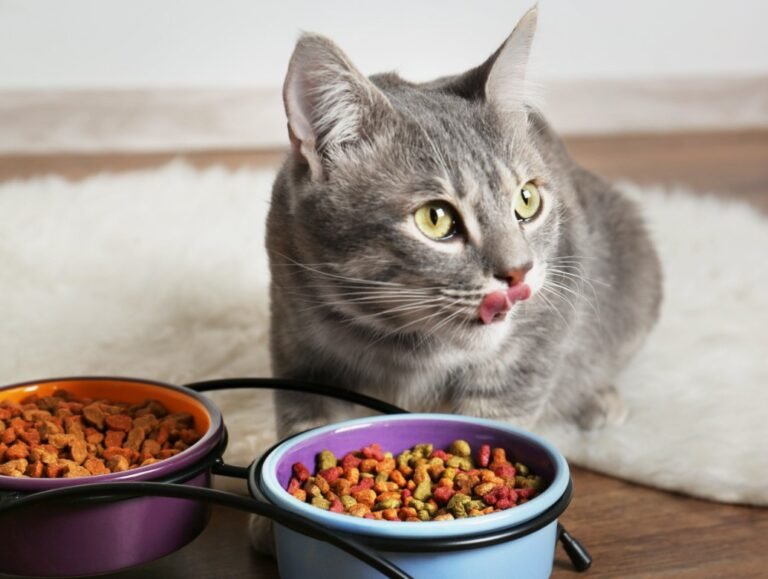Introduction to Cat Food Allergies
Cat food allergies are relatively common, affecting a significant portion of the feline population. Just like humans, cats can develop sensitivities or allergic reactions to certain ingredients in their diet. Understanding the symptoms of cat food allergies is crucial for pet owners, as it helps in identifying and addressing the problem promptly. This article delves into the various symptoms associated with cat food allergies, the causes, and the steps to manage and treat these allergic reactions.
Common Symptoms of Cat Food Allergy
Skin Irritations
One of the most prevalent symptoms of cat food allergies is skin irritation. Cats may develop itchy, inflamed skin, which can lead to excessive scratching, biting, or licking. Common areas affected include the face, ears, and paws. Over time, this can result in hair loss, scabs, and open sores, which can become infected if left untreated. Owners might notice their cats grooming themselves more than usual, particularly in these affected areas.
Gastrointestinal Issues
Gastrointestinal problems are another major indicator of food allergies in cats. Symptoms such as vomiting, diarrhea, and flatulence can occur. Some cats may also experience a decrease in appetite or sudden weight loss due to their discomfort. These symptoms often appear shortly after the cat has eaten, making it easier to link them to food allergies. Chronic digestive issues, even if mild, should be taken seriously as they can lead to more severe health problems over time.
Ear Problems
Cats with food allergies often develop ear infections or experience chronic ear inflammation. Symptoms include redness, swelling, and a noticeable buildup of wax or discharge. Infected ears may have a foul odor, and the cat might shake its head frequently or scratch at the ears. These symptoms are not only uncomfortable for the cat but can also lead to further complications if the infection spreads.
Respiratory Symptoms
Though less common, respiratory symptoms can also be a sign of food allergies in cats. These include coughing, wheezing, and difficulty breathing. These symptoms can sometimes be confused with other respiratory conditions, such as asthma or infections, making it important to consider food allergies as a potential cause if other symptoms are present.
Diagnosing Cat Food Allergies
Veterinary Consultation
Diagnosing food allergies in cats typically begins with a visit to the veterinarian. The vet will perform a thorough physical examination and take a detailed history of the cat’s symptoms and diet. They may recommend a series of tests to rule out other possible causes of the symptoms, such as parasitic infections, bacterial or fungal infections, and other underlying health conditions.
Elimination Diet
The most effective method for diagnosing food allergies in cats is an elimination diet. This involves feeding the cat a diet consisting of novel proteins and carbohydrates that they have not been exposed to before. Common choices include venison, duck, or a specially formulated hypoallergenic cat food. The elimination diet is usually followed for a period of 8-12 weeks. During this time, all treats, table scraps, and flavored medications must be avoided to ensure the accuracy of the test.
Reintroduction Challenge
If the cat’s symptoms improve on the elimination diet, the next step is a reintroduction challenge. This involves gradually reintroducing potential allergens one at a time while monitoring the cat for any return of symptoms. This process helps pinpoint the specific ingredient causing the allergic reaction. Once identified, this ingredient should be permanently removed from the cat’s diet.
Managing Cat Food Allergies
Dietary Management
The primary approach to managing cat food allergies is through dietary management. Once the offending ingredient is identified, it should be eliminated from the cat’s diet. Pet owners should carefully read labels and choose cat foods that do not contain the allergen. Many commercial pet food brands offer hypoallergenic or limited ingredient diets specifically designed for cats with food allergies. It’s important to ensure that the new diet provides all the necessary nutrients for the cat’s overall health.
Regular Monitoring and Adjustments
Managing cat food allergies is an ongoing process. Regular monitoring of the cat’s health and symptoms is essential. Pet owners should keep a diary of their cat’s diet and any reactions that occur, as this can help in identifying any new allergens that may develop over time. Regular veterinary check-ups are also important to ensure that the cat remains healthy and to make any necessary adjustments to their diet.
Additional Treatments
In some cases, cats with food allergies may require additional treatments to manage their symptoms. This can include medications to alleviate itching and inflammation, antibiotics to treat secondary skin infections, or probiotics to support gastrointestinal health. Always consult with a veterinarian before administering any medication to ensure it is safe and appropriate for the cat’s condition.
Preventing Cat Food Allergies
Gradual Introduction of New Foods
To prevent the development of food allergies, it is advisable to introduce new foods to a cat’s diet gradually. This allows the cat’s immune system to adapt slowly and reduces the likelihood of an allergic reaction. When introducing a new food, offer it in small amounts and monitor the cat for any signs of an adverse reaction.
High-Quality Diet
Feeding cats a high-quality, balanced diet from the start can also help prevent food allergies. High-quality cat foods are typically made with fewer artificial additives and fillers, which can reduce the risk of allergic reactions. Choosing foods with novel or single-source proteins can also be beneficial, particularly for cats that are predisposed to allergies.
Regular Health Check-Ups
Regular veterinary check-ups are crucial in maintaining a cat’s overall health and detecting any early signs of food allergies. Routine health assessments allow for early intervention, which can prevent the progression of symptoms and improve the cat’s quality of life.
Conclusion
Cat food allergies can significantly impact a cat’s health and well-being. Recognizing the symptoms, such as skin irritations, gastrointestinal issues, ear problems, and respiratory symptoms, is the first step in addressing the problem. Through proper diagnosis, primarily using an elimination diet and reintroduction challenge, the specific allergen can be identified and removed from the cat’s diet. Managing these allergies requires ongoing dietary management, regular monitoring, and, in some cases, additional treatments. Preventative measures, such as the gradual introduction of new foods and providing a high-quality diet, can also help reduce the risk of food allergies. With the right approach, pet owners can ensure their cats lead healthy, comfortable lives free from the discomfort of food allergies.



